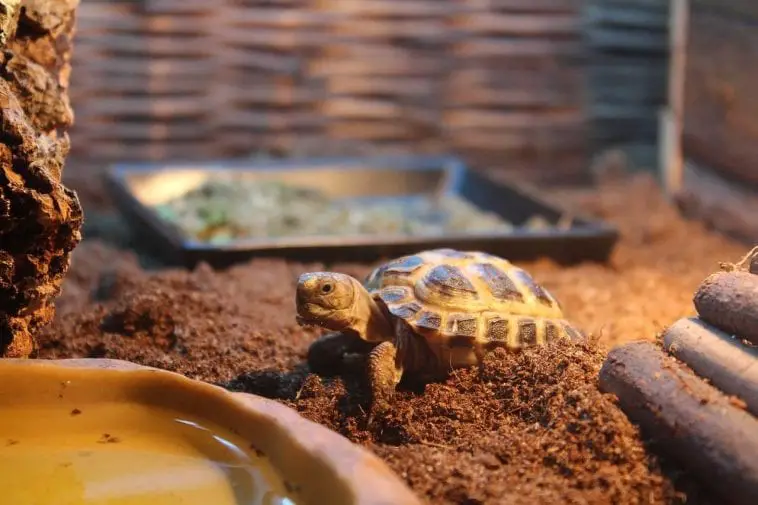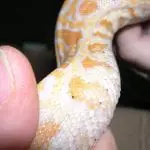If you’re contemplating getting a tortoise for a pet, then one of the most important things that you need to consider is where you are going to raise them. Are you planning to place them indoors or outdoors? There are about 300 species of tortoise out there. Some are perfect for outdoor raising, while some are great for indoors.
In this article, we will focus more on how to find the best tortoise to keep indoors and how to take good care of them. Different pets have different personalities and special care requirements. For us to raise a happy and healthy pet, we must know what kind of species we are raising and what ways we can employ to ensure optimal health.
Before we provide you our list about the best tortoise to keep indoors, we must provide you helpful information first regarding what to consider when choosing a pet tortoise. A responsible owner should always consider his or her lifestyle before getting a pet. In a case of raising a tortoise, considering your location and lifestyle is crucial. It’s important to note that every tortoise species is unique and special, and they require different kinds of environment and care approaches.
Here are some of the most important things that you need to consider before buying a tortoise.
Food and Environment
Although they are of the same species, different tortoises have some slight differences when it comes to food and even husbandry. Some species love to eat grains, and some love fruits. You can also find tortoises that require more vitamin supplementation than others. Also, you have to consider heating and lighting when setting up an enclosure for your pet.
Cost and Space
Another important thing that you need to consider is how much you are willing to spend on raising or taking care of tortoises. Bear in mind that there are bills to pay when raising these wonderful pets. You have to pay for their food, supplements, and even veterinarian bills. You also have to prepare to shell out extra money for added electricity consumption due to lighting and heating setup. Do you have enough space to take care of tortoises? Also, bear in mind that bigger tortoises require bigger food and enclosure – this means a higher cost.
Legality
Finally, make sure that you consider the legality of tortoise pet acquisition. Not all tortoises can be legally acquired. Before you purchase a particular pet, you always have to consider the legalities. Find out more information about the laws regarding exotic tortoises before you make a purchase. After considering these things, you are now ready to raise and take care of the best tortoise on the planet.
Best Tortoise to Keep Indoors
You want smaller species of tortoises if you’re planning to keep them indoors. Smaller tortoises are easier to raise, and you’ll also be able to save more time, energy, money, and space. We made a list just for you about the best small species of tortoise that you can acquire and raise inside your house or property. We also added tips and guidelines on how to take good care of them.
Egyptian Tortoises
One of the most accepted indoor tortoise pets that you can easily find in the market today is the Egyptian Tortoises. It’s one of the most popular tortoises all over the world and is also known as Kleinmann’s tortoise. These pets can easily be found in the north and Middle East coast of Africa. It’s a small size pet that can be easily distinguished because of their triangle markings at the bottom of their shell. As they age, the marking becomes more prominent.
Male tortoises are smaller compared to females, which can grow about 5 inches. Because these pets come from drier areas and are accustomed to little vegetation, feeding and raising them should not be that problematic. You should place sand on the enclosure and mimic their natural environment. Also, it’s worth mentioning that Egyptian tortoises are considered a prized pet. Make sure that you do some research first before you start raising these tortoises.
Indian Star Tortoises
Another popular tortoise that you can easily keep indoor is that Indian Star tortoises. They are perfect as indoor pets, and they originated from Sri Lanka, China, and India. These pets are unique and attractive – thanks to their beautiful patterns. You also won’t have any problems raising them indoors since they only grow about 7 to 12 inches in length.
You need to know, though, that these tortoises don’t want to be handled. Be sure that you keep it away from young children. They are shy but will eventually start to recognize their owners after some time. You must provide them enough space to roam around. A large indoor enclosure is necessary for them to live healthier and avoid any stresses. It’s recommended that you provide them fresh and dry beddings. Give them clean water as well and if you think that they are losing their appetite, then make sure that you call the vet the soonest time possible.
And before you buy these tortoises, make sure that you check the reputation of the breeder. You should also examine the eyes of these tortoises and make sure that there are no blemishes on their shells.
Russian Tortoise
The Russian tortoise is among the most popular choices for beginners. What makes them the best pet for new tortoise owners is that they are small, affordable, and at the same time, beautiful. They are also one of those pets that are very easy to raise and maintain. You need to know, though, that most of these Russian tortoises are caught in the wild. Therefore, you should always check for any diseases or stresses before you put them inside your home or property.
They can grow about 5 to inches in length, although female tortoises can grow up to 9 inches. Aside from providing these tortoises the healthy foods, you also have to make sure that you provide them proper UVB lighting. They need a spot inside the enclosure where they can bask. Also, don’t forget to place a shallow water dish inside the enclosure. Bear in mind that tortoises don’t swim, and so it’s dangerous for them to have deep water dishes.
Heating these tortoises is also essential. Their basking spot should be around 90F and be sure that the temperature does not go below 75F. Also, it’s very important that you monitor the humidity properly and that you prevent any excess of moisture. The ideal size of the enclosure should be around 2 x 3 feet.
Greek Tortoise
Also known as the Mediterranean Spur-Thighed tortoise, Greek tortoise is great for captive breeding. Raising them is very easy, even for beginners. What is interesting about these tortoises is that they can outlive their owners. Yes, they can live for more than 100 years. You’ll find a lot of people who include these tortoises in their wills to ensure that someone will continue to take good care of them.
They can reach a size of up to 5 to 8 inches, and females can grow as big as 10 to 11 inches, although this is quite uncommon. When raising these pets, you have to make sure that you provide them a basking spot that is about 90F to 100F. Compared to Russian tortoises, these particular species requires a higher temperature. Therefore, providing them a heating pad and UVB light is truly essential.
Hermann’s Tortoise
If you want a pet tortoise that is beautiful and at the same time have an awesome personality, then you can’t go wrong with Hermann’s tortoise. This tortoise can live up to 50 years, and the longest lifespan recorder is more around 110 years old! Of course, proper care and maintenance are required for the tortoise to reach this age. The female tortoise can grow from 5 to 6 inches while male ones are slightly smaller. T
These tortoises can be raised well both indoors and outdoors. It’s very important though that you provide them adequate space. It’s also necessary that you place a UVB light inside their enclosure and keep 12 cycles off and on. Mimicking the day and night cycle is important for these tortoises to remain healthy.
Final Thoughts
These tortoises are very easy to find, and with proper research, you should be able to raise a happy and healthy turtle. If this is your first time buying a tortoise for a pet, then we highly recommend that you do some reading first. Don’t hesitate to contact veterinarians if you have questions about how to take good care of them. Also, be sure that you ask for tips or pieces of advice from the breeders to ensure that you are truly providing optimum care for these pets.
Asking for advice or recommendations from your friends or families who have raised tortoises before is also a wise idea. Again, research is the key for you to become a responsible owner. Enjoy taking care of your pet and the rewards that go along with it.



